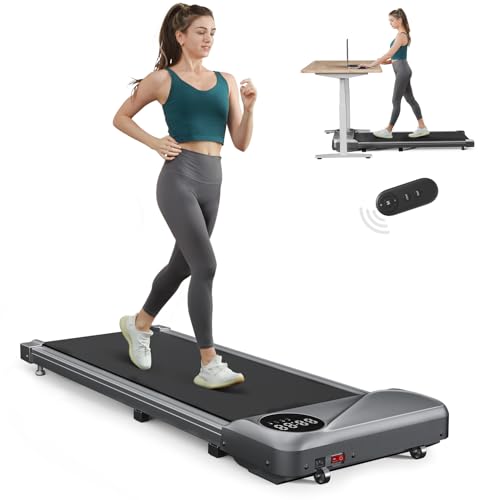The Walking Machine: A Comprehensive Guide to Your Fitness Companion
In today's busy world, where time is a luxury, maintaining a consistent workout routine can be an obstacle. For numerous, a walking machine-- typically understood as a treadmill-- serves as an ideal fitness buddy. This short article supplies a thorough take a look at walking machines, including their benefits, types, maintenance ideas, and often asked concerns.
Why Choose a Walking Machine?
Walking machines offer a useful and reliable way to include cardiovascular exercise into daily life. Here are a number of key advantages:
- Convenience: Walking machines enable individuals to work out anytime, regardless of weather conditions or time restrictions. They are best for busy schedules.
- Flexibility: Users can walk, jog, or run at their own speed and intensity.
- Safety: Walking machines present a lower risk of injury compared to outside walking or running, particularly for newbies or those recovering from injuries.
- Tracking Progress: Many treadmills come with integrated monitors that track metrics like speed, distance, and calories burned.
Kinds Of Walking Machines
When thinking about a walking machine, it's important to pick the ideal type based on individual physical fitness goals and area restrictions. Below are the primary types of walking machines:
| Type | Description |
|---|---|
| Manual Treadmills | These machines do not have a motor, and users require to stroll or go to turn the belt. |
| Electric Treadmills | Powered by an electric motor, enabling users to set the speed and slope easily. |
| Folding Treadmills | Designed for simple storage, these treadmills can be folded when not in usage. |
| Desk Treadmills | Suitable for a dual work and exercise environment, these compact machines permit walking while working. |
| Incline Trainers | These enable users to mimic uphill walking, enhancing workout intensity and calorie burn. |
Selecting the Right Walking Machine
Picking the ideal walking machine can substantially impact inspiration and effectiveness. Here are some factors to consider:
Key Features to Look For
- Motor Power: An effective motor makes sure a smooth and constant workout. For occasional walkers, a 1.5 HP motor is normally enough; for much heavier use, try to find 3.0 HP and above.
- Belt Size: A larger and longer belt supplies more area for a comfy stride. visit the following website page vary from 16 inches large and 50 inches long.
- Slope Options: Adjustable slope settings can replicate walking or running uphill, increasing the intensity of the exercise.
- Shock Absorption: Good shock absorption reduces the threat of joint injuries and enhances convenience.
- Console Features: Look for integrated exercises, heart rate monitors, and connection features like Bluetooth for a more interesting experience.
Budget Considerations
Walking machines been available in a wide variety of costs, depending on features and construction quality. Here's a rough budget plan breakdown:
| Price Range | Functions |
|---|---|
| Under ₤ 300 | Fundamental manual or little electric treadmills with minimal functions. |
| ₤ 300 - ₤ 700 | More sophisticated electric treadmills with incline, medium power motors, and much better warranties. |
| ₤ 700 - ₤ 1500 | Premium electric treadmills with larger integrated screens, comprehensive functions, and guarantees. |
| ₤ 1500 and above | High-end models offering innovative innovation, functions, and long lasting building for severe physical fitness enthusiasts. |
Upkeep Tips for Your Walking Machine
To ensure durability and optimum efficiency of a walking machine, think about the following maintenance suggestions:
- Regular Cleaning: Dust and sweat can accumulate on the machine and the belt. Wipe down the surface areas and tidy the belt regularly.
- Lubrication: Depending on the model, lubing the running belt periodically can avoid wear and tear. Check the maker standards for advised lubrication schedules.
- Evaluation: Periodically inspect the machine for loose screws or used parts. Tighten up and change as needed.
- Calibration: Occasionally, examine the calibration of your machine's metrics to ensure they supply accurate data.
- Appropriate Use: Follow the producer's suggestions for weight limits and operational standards.
FAQs About Walking Machines
1. Are walking machines a great exercise?
Yes, walking machines provide an excellent cardiovascular exercise, can assist with weight reduction, and improve general health.
2. How often should I use a walking machine?
Go for at least 150 minutes of moderate-intensity aerobic activity per week, which can easily be achieved with regular sessions on a walking machine.
3. Can I drop weight on a walking machine?
Yes, integrating a walking machine regimen into a healthy diet can promote weight reduction, especially if integrated with intervals and incline training.
4. Is it safe for elders to utilize a walking machine?
Yes, walking machines can be safe for senior citizens with low-impact settings and security features like handrails. However, people ought to speak with their doctor before starting any workout program.
5. What's the distinction between a treadmill and a walking machine?
The term "walking machine" typically refers to a treadmill meant for walking, while "treadmill" can refer to machines utilized for different intensities, consisting of running.
With their versatility and benefit, walking machines can significantly enhance one's physical fitness journey. By carefully picking the ideal type, ensuring correct upkeep, and including different workout strategies, users can optimize their walking machine's benefits. As with any exercise regimen, consistency is essential to accomplishing enduring fitness results.

